
Meet the troop — a guide to our gorillas
Posted on: 24 September, 2024
As work continues on our new Central African Forest area, we’re looking forward to our western lowland gorilla troop moving into their new habitat here at Bristol Zoo Project.
Keeper Imogen, who has been working with our troop for over five years, talks us through the members of the troop, and their future at Bristol Zoo Project.

Gorilla conservation
Bristol Zoological Society has cared for gorillas since the 1930s, contributing to the European captive breeding programme, an essential part of the species’ conservation. The stable and genetically diverse captive gorilla population is helping to safeguard the future of the species, which is classed as critically endangered. A huge amount of thought and planning is put into the European breeding programme, which matches individuals to keep genetic diversity as high as possible.
We are protecting the wild populations in Equatorial Guinea through our project in Monte Alén National Park. We work with local communities to find ways for people to co-exist with the park’s wildlife, which includes the Critically Endangered Western lowland gorilla and African forest elephant.
Meet our gorilla troop
Jock
Jock, our beloved silverback, is the oldest male gorilla in the UK. He has been our breeding male for the last 20 years and has fathered several infants in that time.
In the wild, western lowland gorilla troops are made up of a dominant breeding male, the silverback, many females and their offspring. The silverback protects the troop and its territory, and cares for its family. The adult females focus constantly on improving and reinforcing their relationship with the silverback.
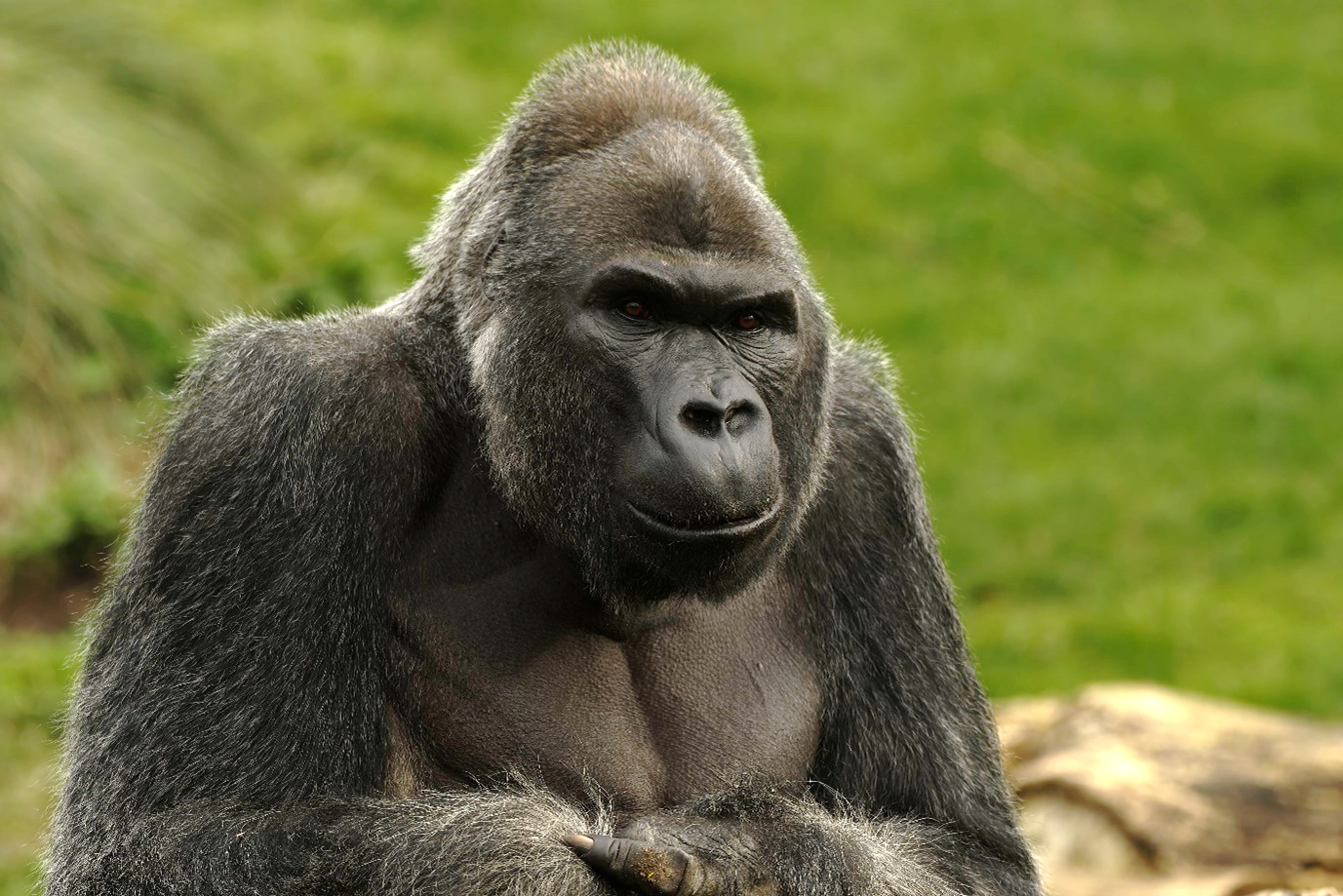
Jock joined us in 2003, from London Zoo, at the age of 20. He has always had a big personality and was extremely energetic, but the expertise of our keepers helped him settle into his new role. Jock has mellowed in his 20 years with us, and at the grand old age of 41, his care is focused on keeping him happy and healthy.
Touni
Touni is one of the three adult females that make up the troop. Mother to Juni and Ayana, she is a confident member of the group. Unlike with males, the social hierarchy of females in gorilla troops is fluid, but Touni has remained in a dominant position in the group since she joined nine years ago.
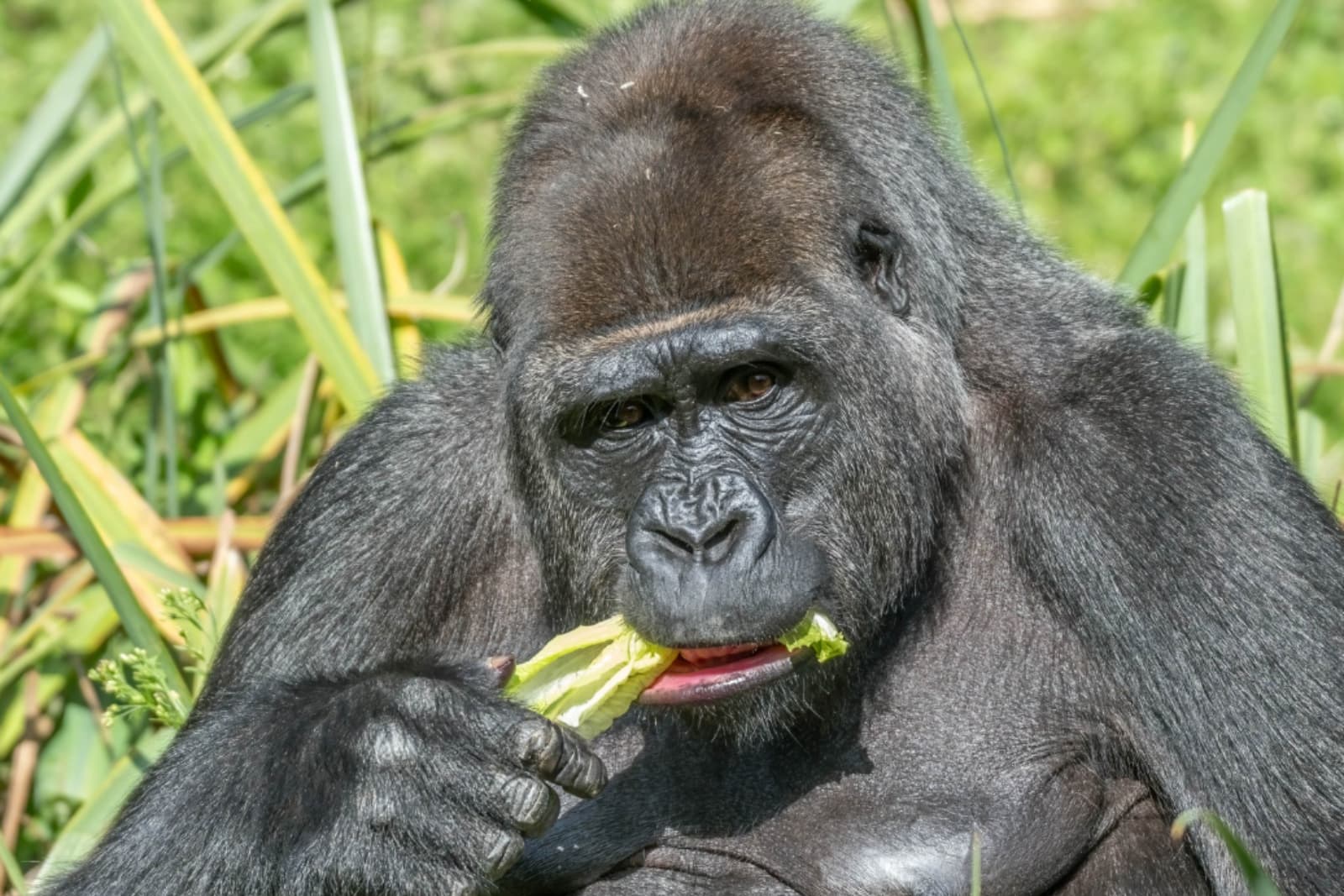
Touni is curious, clever and highly active. She is an excellent tree climber, which will be brilliant to observe when she moves into the new Central African Forest (CAF) habitat, which will have many established native woodland trees. Touni not only climbs trees but is also a competent tool maker, using broken branches to reach food that is just out of reach. Behaviour like this really showcases her intelligence, and we hope that the stimulating environment of CAF will give her even more opportunities to use her thinking skills.
Ayana
Ayana is Touni’s eldest daughter. She’s now seven years old, and the spitting image of her mum.
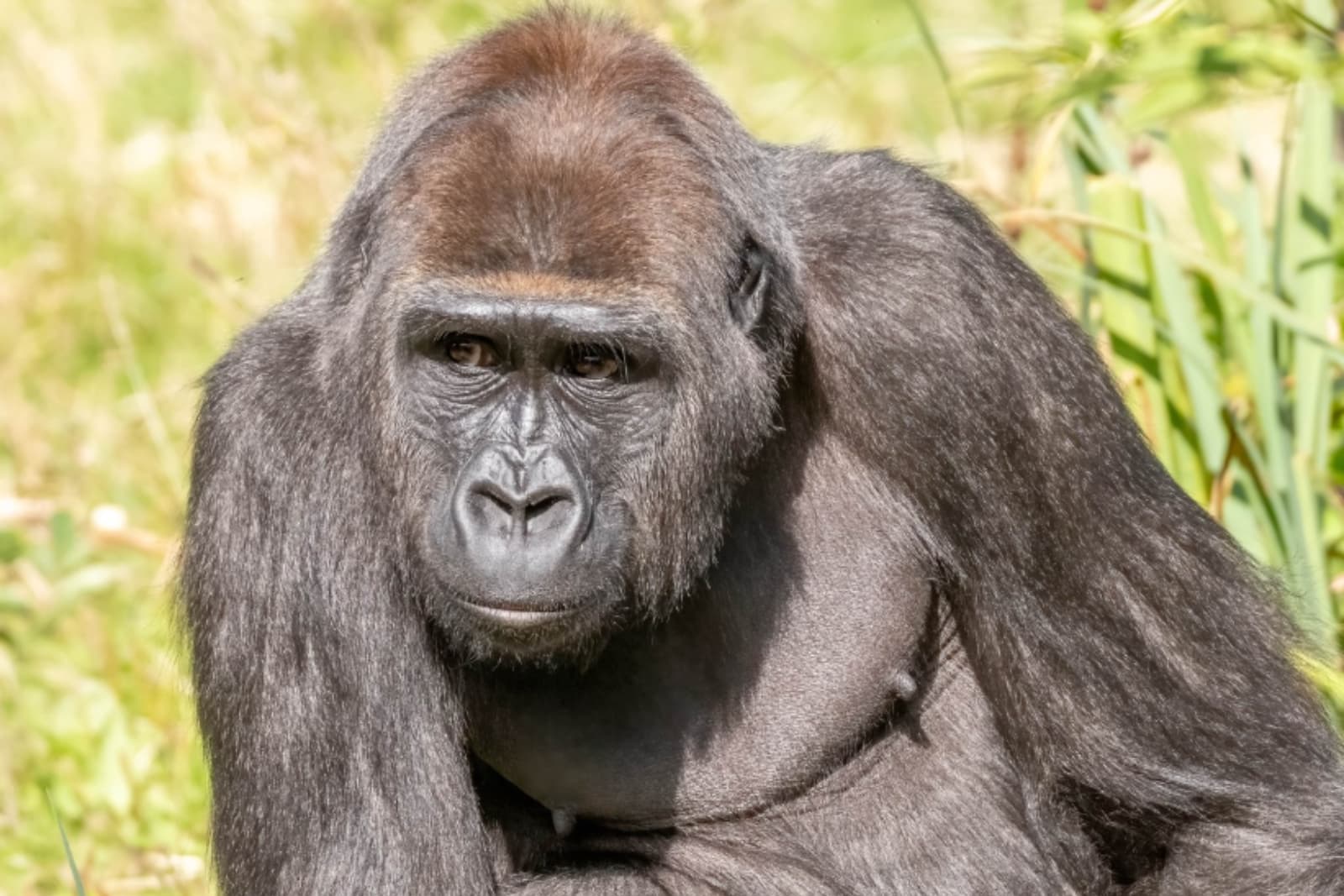
She’s confident and sociable, testing boundaries within the troop and challenging the other adults – sometimes hitting Jock on the head! She has a lovely relationship with her brother Juni and can often be seen grooming him.
Ayana will be transferred to another troop within the next couple of years to breed, contributing to a genetically diverse and stable population in zoo care. It’s likely she will move over to CAF with the rest of the troop, but may depart relatively soon afterwards.
Juni
At nearly four years old, Juni is still an infant but developing skills and confidence rapidly. He’s had great support from the beginning of his life, with a strong, stable mum in Touni and a caring and attentive older sister in Ayana.
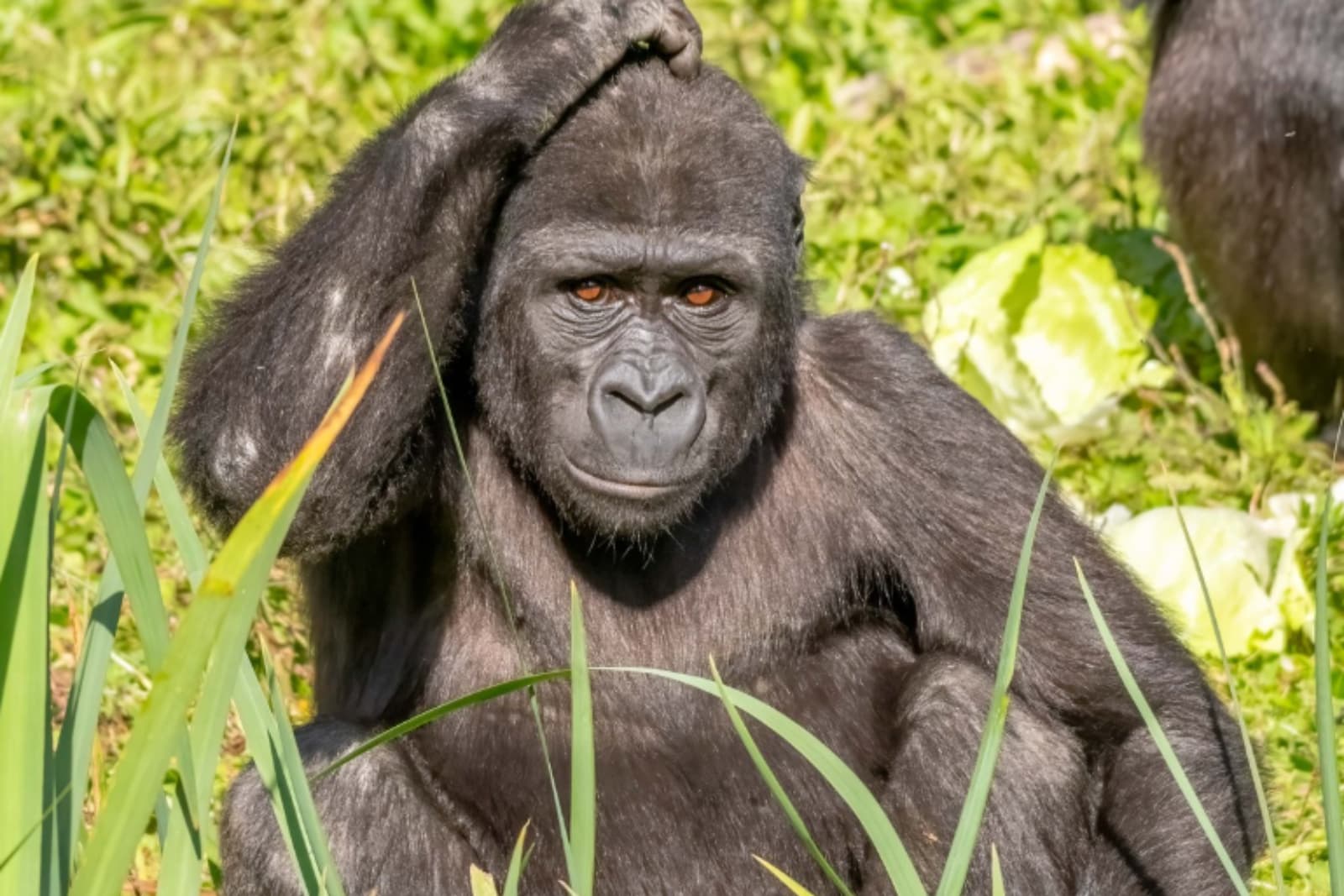
He is a fussy eater but getting better at trying new things now he is weaned. He’s also a keen nest builder. We provide plenty of nesting material to let him practice and learn.
Kala
Kala, unlike Touni, is reserved, with a lower social standing in the group. Kala is however Jock’s favourite adult female and has bred successfully since joining the Bristol group, giving birth to Hasani in 2020. Kala has found motherhood challenging and as a result Hasani’s initial rearing was supported by keepers. Kala now co-parents Hasani with another, more experienced adult female, Kera, who is showing her the ropes.
Hasani
Hasani is a big and boisterous four year old. He spends his days playing with his brother Juni who he towers over despite their similar ages.
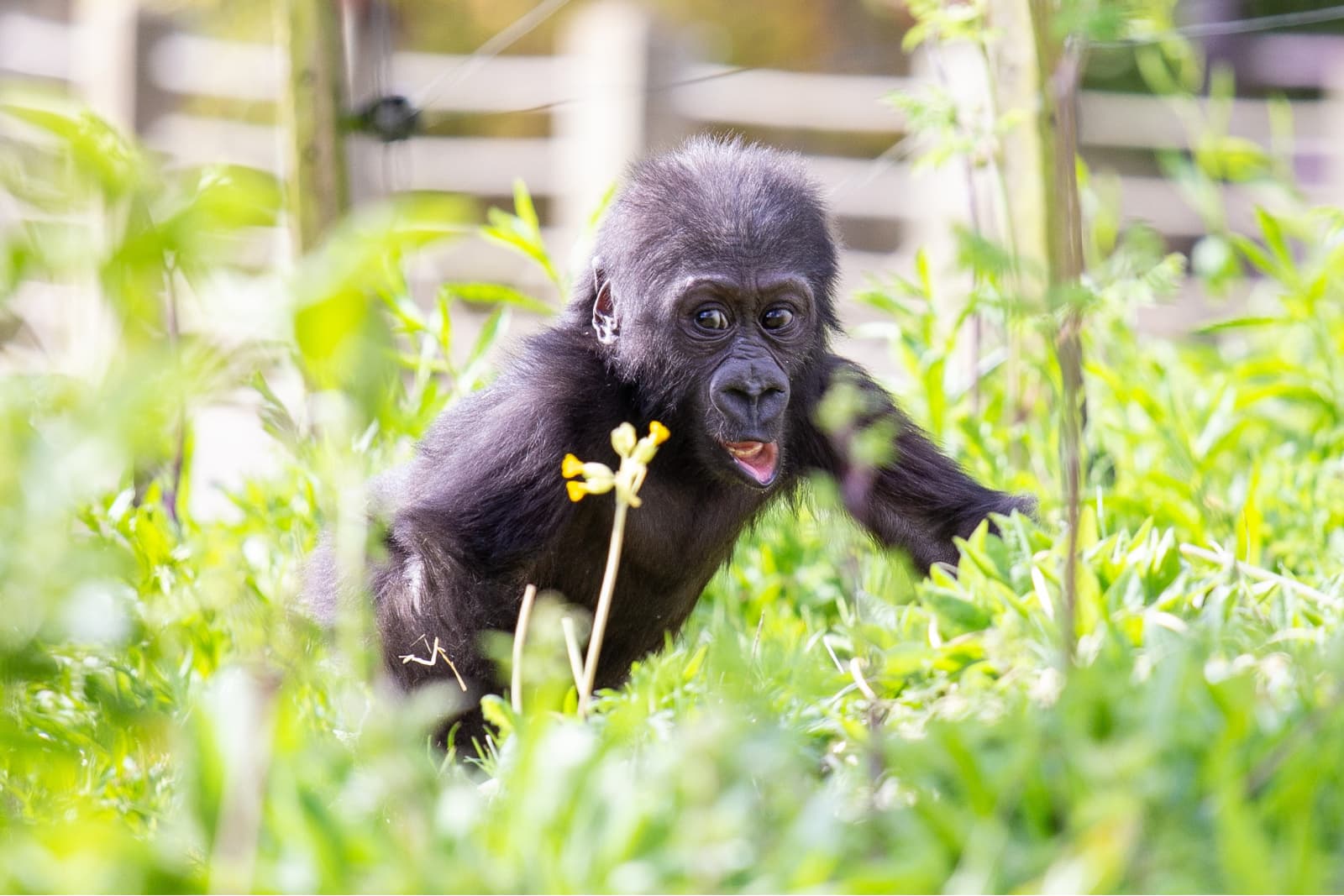 Despite having different starts in life, Hasani and Juni have navigated their infancy together and have supported each other through play.
Despite having different starts in life, Hasani and Juni have navigated their infancy together and have supported each other through play.
Kera
Kera is the eldest female in the troop, at 19 years old. Kera hasn’t had the easiest time in life but is extremely clever and capable. Born as a set of twins, her mother struggled to cope with two infants. Kera was therefore hand reared by keepers at another collection and introduced to the Bristol troop when she was just four years of age. Fitting into an established family had its challenges but Kera found her place and was firm friends with Komale, Jock’s son. Kera and Komale subsequently had a daughter, Afia.
Kera suffered from pre-eclampsia during her pregnancy, a potentially life-threatening condition. Because of this, Afia was delivered by emergency c-section, one of the first ever for gorillas. Although the procedure was a success, Kera then suffered from severe secondary complications. She received a blood transfusion from her mate Komale, which saved her life. She recovered fully.
With the birth complications, Kera’s daughter Afia had to be hand-reared, so Kera missed her first opportunity at motherhood. The later co-parenting situation with Kala’s son Hasani gave her a second chance, and she proved herself caring and attentive.
Afia
Afia, Kera’s daughter, is now eight years old, and is starting to find her place in the troop. She has always had a close bond with Jock, sleeping and eating next to him when she was young. Afia is now reaching adulthood and her role is changing as she finds her position in the female hierarchy. As Afia has the support of Jock, she is proving herself as a powerful contender.

The troop’s future
The troop will move into the new Central African Forest habitat at Bristol Zoo Project well ahead of the public opening, to give them plenty of time to settle in. The logistics of the move will be complex (it’s very unusual to move more than one gorilla at once) but plans and preparations are well underway. Ahead of the opening, the gorillas will also be introduced to a new group of Endangered cherry-crowned mangabeys that will live alongside them in the new habitat.
The gorillas and mangabeys will each have their own indoor areas and a large shared outdoor forest area, with plenty of trees and space to explore and exhibit natural behaviours.
Sharing the space with the mangabeys offers enrichment for both species, in the same way that our wolves and bears live alongside each other in Bear Wood. Encountering and interacting with other species would be a natural part of life in the wild.
Images by Jon Drew.

Want to help us save wildlife?
Become a member today for a year of wild adventure, and help protect the animals and habitats you love by supporting our conservation charity.

